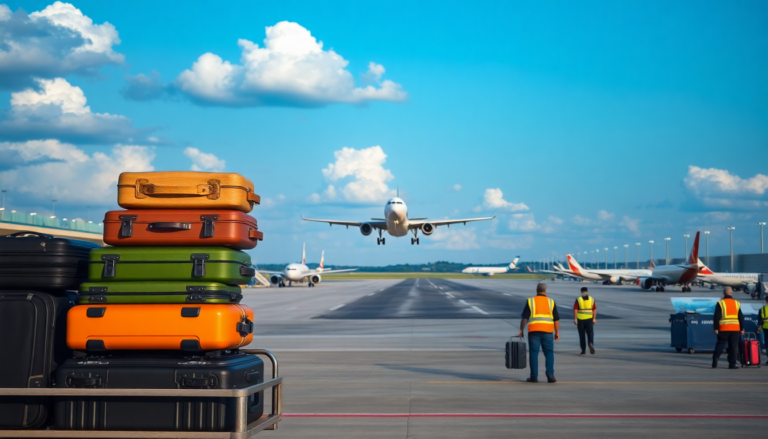Argomenti trattati
The skies over Europe are buzzing with activity again, as daily flights soar to levels we haven’t seen in years. It’s a thrilling time for travelers, but this resurgence isn’t without its hiccups. With the excitement of exploring new destinations comes the frustrating reality of increasing delays, casting a shadow over the joy of travel. As we navigate this post-pandemic landscape, the air travel scene is vibrant yet complex, presenting both opportunities and challenges for the modern traveler.
The Surge in Air Traffic
July 2025 was a game-changer for European aviation. For the first time since 2019, the number of flights exceeded pre-pandemic levels. A study by RimborsoAlVolo, leveraging Eurocontrol data, revealed a 1% uptick compared to the same period in 2019, with a jaw-dropping 35,565 flights taking to the skies each day—a 3% increase from 2024. While this surge signals recovery, it has also put immense strain on air traffic management systems, leading to a rise in delays and operational challenges. Isn’t it fascinating how progress can sometimes come with its own set of hurdles?
In just the first half of July, over 2.3 million minutes of delays were logged, translating to an average delay of 4 to 5.8 minutes per flight. And these figures only account for air traffic control issues, leaving out other factors like bad weather or technical glitches. The summer travel boom has overwhelmed control towers, radar systems, and airport staff, many of whom are still grappling with limited resources. It makes you wonder: how can we ensure a smoother travel experience?
Delays: A Growing Concern
France is at the forefront of this challenge, with its airports responsible for a staggering 41% of all delays in Europe. This concerning statistic arises from a mix of staffing shortages and structural limitations in traffic management, often exacerbated by congested airspace. Spain isn’t far behind, contributing to 16% of delays, primarily due to adverse weather and an influx of eager tourists. Meanwhile, Germany faces challenges from high traffic volumes and recurring technical issues, accounting for 9% of delays.
On the flip side, some southern European airports are struggling even more, with punctuality taking a hit. Lisbon, for instance, has the lowest on-time performance, with a mere 40% of flights leaving as scheduled. Palma de Mallorca follows at 45%, while Rome Fiumicino isn’t much better at 48%. The influx of tourists has stretched their operational capabilities thin, making the travel experience less enjoyable for countless passengers. Have you ever found yourself caught in the chaos of a delayed flight?
The Way Forward: Improving Air Travel
While these statistics paint a clear picture of the challenges faced up to July, the outlook for August seems daunting. Predictions indicate a further rise in departures, with Eurocontrol forecasting average delays could range from 2.02 to 2.54 minutes per flight on major routes—resulting in over 70,000 minutes of delays each day. This starkly contrasts with the European authorities’ target of just 0.9 minutes per flight, highlighting a significant gap in operational efficiency.
The main culprits behind these delays continue to be a shortage of air traffic controllers, radar technicians, and specialized staff, as pointed out by Willie Walsh, the Director General of IATA. For travelers eager to avoid delays, consider flying from airports like Oslo, which enjoys an impressive 80% on-time departure rate, along with Copenhagen (76%) and London Heathrow (75%). These airports have managed to maintain commendable operational efficiency despite handling high volumes of traffic. Isn’t it reassuring to know there are still reliable options out there?
As air traffic continues to rise and tourism flourishes, tackling the issue of delays is crucial. With summer in full swing and millions of Europeans on the move, it’s essential for airlines and airport authorities to step up their game in operational management. After all, the journey should be just as enjoyable as the destination. So, the next time you plan a trip, how will you navigate these challenges to ensure a smooth travel experience?

